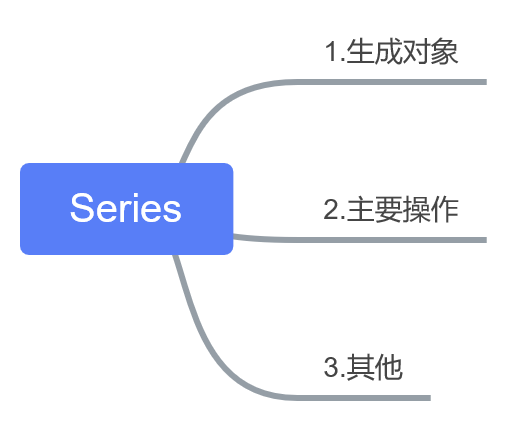标签:3.3 原则 2.3 lte lin cal 概览 翻译 数据结构

>>> pd.Series(np.random.randn(5))
0 1.617186
1 0.326732
2 -0.230443
3 -0.137932
4 0.474872
dtype: float64
>>> pd.Series(np.random.randn(5),index=[‘a‘, ‘b‘, ‘c‘, ‘d‘, ‘e‘])
a 0.048464
b 1.413755
c 0.036489
d 0.533946
e 0.286384
dtype: float64
>>> d = {‘b‘ : 1, ‘a‘ : 0, ‘c‘ : 2}
>>> pd.Series(d)
b 1
a 0
c 2
dtype: int64
>>> pd.Series(d,index=[‘b‘, ‘c‘, ‘d‘, ‘a‘])
b 1.0
c 2.0
d NaN
a 0.0
dtype: float64
>>> pd.Series(5,index=[‘a‘, ‘b‘, ‘c‘, ‘d‘, ‘e‘])
a 5
b 5
c 5
d 5
e 5
dtype: int64
>>> pd.Series(‘a‘,index=[‘b‘, ‘c‘, ‘d‘, ‘a‘])
b a
c a
d a
a a
dtype: object
>>> se =pd.Series(np.random.randn(5),index=[‘a‘, ‘b‘, ‘c‘, ‘d‘, ‘e‘])
>>> se[:3] #slice
a 1.169659
b -1.557760
c 1.199475
dtype: float64
>>> se[se >se.median()] #filter
a 1.169659
c 1.199475
dtype: float64
>>> se[[4,3,1]] #indexing
e -1.113787
d 0.571881
b -1.557760
dtype: float64
>>> se[‘a‘]=12 #indexing
>>> ‘e‘ in se
True
>>> se+se
a 24.000000
b -3.115519
c 2.398949
d 1.143761
e -2.227573
dtype: float64
>>> se*4
a 48.000000
b -6.231039
c 4.797899
d 2.287523
e -4.455147
dtype: float64
>>> np.exp(se)
a 162754.791419
b 0.210607
c 3.318373
d 1.771596
e 0.328313
dtype: float64
>>> s=pd.Series(np.random.randn(5),name=‘something‘)
>>> s
0 -0.010572
1 -0.519850
2 0.649738
3 -0.443780
4 0.402685
Name: something, dtype: float64
>>> s2=s.rename(‘different‘)
>>> s2
0 -0.010572
1 -0.519850
2 0.649738
3 -0.443780
4 0.402685
Name: different, dtype: float64
import pandas as pdu
import numpy as npa
n
#basic tentet:data aligment/基本的原则:数据对齐m
#point:data types;indexing;axis labeling/alignment]/要点:数据类型,索引,轴标签和对齐
def series():
#*generate
#ndarray
se=pd.Series(np.random.randn(5))
se =pd.Series(np.random.randn(5),index=[‘a‘, ‘b‘, ‘c‘, ‘d‘, ‘e‘])
#dict
d = {‘b‘ : 1, ‘a‘ : 0, ‘c‘ : 2}
se=pd.Series(d)
se=pd.Series(d,index=[‘b‘, ‘c‘, ‘d‘, ‘a‘])
#scalar
se=pd.Series(5,index=[‘a‘, ‘b‘, ‘c‘, ‘d‘, ‘e‘])
#*operate
#ndarrat-like
se[:3] #slice
se[se >se.median()] #filter
se[[4,3,1]] #indexing
#dict-like
se[‘a‘]=12 #indexing
‘e‘ in se
#compute
se+se
se*2
np.exp(se)标签:3.3 原则 2.3 lte lin cal 概览 翻译 数据结构
原文地址:https://www.cnblogs.com/vvlj/p/9973801.html